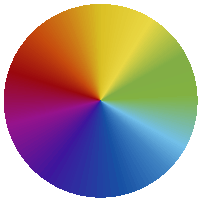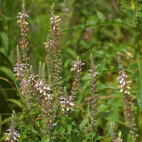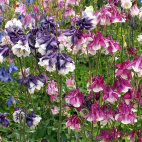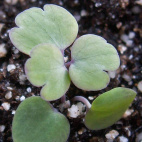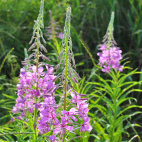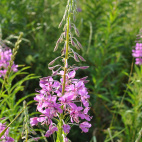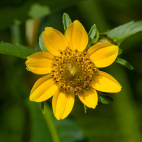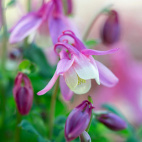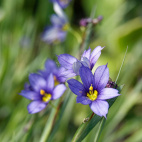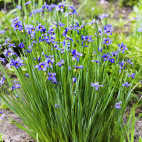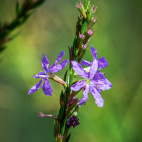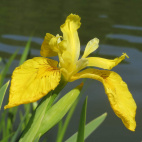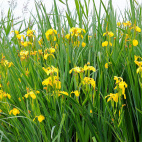Color
Availability
USDA Zone
Region
Type
Duration
Season
Germination
Soil
Sunlight
Height
Use
Narrow Your Search
Color
Availability
USDA Zone
Region
Type
Duration
Season
Germination
Soil
Sunlight
Height
Use
Wildflower Seeds - Northern Region
The Northern region is home to our Canadian friends in the eastern provinces, as well as the northern-most part of the Eastern US. This area is characterized by a long, cold winter with lots of snow, and a short humid summer that only lasts about 3 or 4 months. Most of the area is classified as a UDSA Growing Zone 4 or less, and the species that grow here have interesting ways to perpetuate themselves in spite of the short growing season. There are a lot of forests and wetlands in this region, so adequate moisture is hardly ever a problem. Look up your growing zone to make sure that the Northern wildflower seeds that you want to grow are winter hardy. Alternatively, just order annual flower seeds online so that the plant does not need to make it through the winter, but can reseed itself and come back from seed the next year.
-
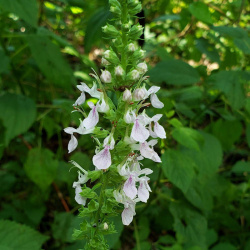 American Germander Seeds
Teucrium canadense
Clustered on velvety spikes, these pink to lavender flowers attract butterflies and hummingbirds. This native perennial is also known as Wild Basil, but we don't recommend consuming it.Quick View$3.48 Pkt - $30.00 / Oz
American Germander Seeds
Teucrium canadense
Clustered on velvety spikes, these pink to lavender flowers attract butterflies and hummingbirds. This native perennial is also known as Wild Basil, but we don't recommend consuming it.Quick View$3.48 Pkt - $30.00 / Oz -
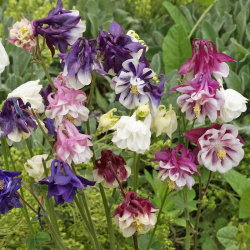 Dwarf Columbine Seed Mix
Aquilegia vulgaris
These delicate, nodding blossoms grow wild throughout much of northern Europe. This 16" dwarf variety produces a lovely mix of colors that will brighten any space!Quick View$3.48 Pkt - $12.65 / Oz
Dwarf Columbine Seed Mix
Aquilegia vulgaris
These delicate, nodding blossoms grow wild throughout much of northern Europe. This 16" dwarf variety produces a lovely mix of colors that will brighten any space!Quick View$3.48 Pkt - $12.65 / Oz -
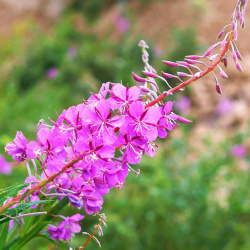 On Sale!
Fireweed Seeds
Epilobium angustifolium
A symbol of the Alaska and Yukon region, these brilliant pink blossoms also light up the prairie. The slightly spicy petals can be used to flavor wildflower honey, candy, ice cream, or jelly.Quick View$3.96 Pkt - $240.00 / Oz
On Sale!
Fireweed Seeds
Epilobium angustifolium
A symbol of the Alaska and Yukon region, these brilliant pink blossoms also light up the prairie. The slightly spicy petals can be used to flavor wildflower honey, candy, ice cream, or jelly.Quick View$3.96 Pkt - $240.00 / Oz -
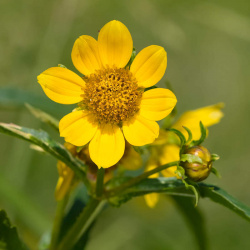 Nodding Bur Marigold Seeds
Bidens cernua
The heads of this bright yellow wildflower nod downward with time, earning its descriptive name. The wet-loving plant thrives in swamps, bogs, ponds, and riverbanks.Quick Viewx
Nodding Bur Marigold Seeds
Bidens cernua
The heads of this bright yellow wildflower nod downward with time, earning its descriptive name. The wet-loving plant thrives in swamps, bogs, ponds, and riverbanks.Quick ViewxNodding Bur Marigold Seeds
Bidens cernua
The heads of this bright yellow wildflower nod downward with time, earning its descriptive name. The wet-loving plant thrives in swamps, bogs, ponds, and riverbanks.
$3.48 Pkt - $26.00 / Oz -
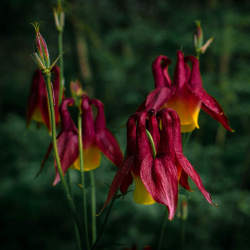 Out Of Stock
Oriental Columbine Seeds
Aquilegia oxysepala
These unusual maroon blossoms are native to parts of northern Asia and Europe. The lovely plant thrives in dry, sunny spots in open forests or on rocky slopes.Quick View$2.98 Pkt - $10.19 / Oz
Out Of Stock
Oriental Columbine Seeds
Aquilegia oxysepala
These unusual maroon blossoms are native to parts of northern Asia and Europe. The lovely plant thrives in dry, sunny spots in open forests or on rocky slopes.Quick View$2.98 Pkt - $10.19 / Oz -
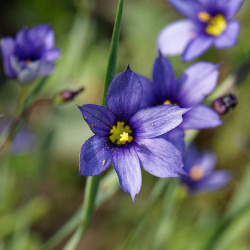 On Sale!
Stout Blue Eyed Grass Seeds
Sisyrinchium angustifolium
While short in stature, this plant's violet-blue blossoms simply pop with color. The leaves of this native perennial look like grass, but it is actually a forb and belongs to the iris family.Quick View$3.75 Pkt - $80.00 / Oz
On Sale!
Stout Blue Eyed Grass Seeds
Sisyrinchium angustifolium
While short in stature, this plant's violet-blue blossoms simply pop with color. The leaves of this native perennial look like grass, but it is actually a forb and belongs to the iris family.Quick View$3.75 Pkt - $80.00 / Oz -
 Store in the FridgeOn Sale!
Winged Loosestrife Seeds
Lythrum alatum
Though often confused with its invasive cousin, this well-mannered wildflower is actually protected and hard to find in the wild. The water-loving beauty will brighten any wetland area with its tiny pink blossoms.Quick Viewx
Store in the FridgeOn Sale!
Winged Loosestrife Seeds
Lythrum alatum
Though often confused with its invasive cousin, this well-mannered wildflower is actually protected and hard to find in the wild. The water-loving beauty will brighten any wetland area with its tiny pink blossoms.Quick ViewxWinged Loosestrife Seeds
Lythrum alatum
Though often confused with its invasive cousin, this well-mannered wildflower is actually protected and hard to find in the wild. The water-loving beauty will brighten any wetland area with its tiny pink blossoms.
$3.75 Pkt - $64.00 / Oz -
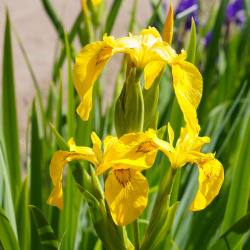 Out Of Stock
Yellow Iris Seeds
Iris pseudacorus
According to legend, the golden fleur-de-lis of France is a stylized version of this yellow iris, which grows wild throughout Europe. The ornamental plant came to North America in the early 20th century and became quite widespread and even invasive.Quick Viewx
Out Of Stock
Yellow Iris Seeds
Iris pseudacorus
According to legend, the golden fleur-de-lis of France is a stylized version of this yellow iris, which grows wild throughout Europe. The ornamental plant came to North America in the early 20th century and became quite widespread and even invasive.Quick ViewxYellow Iris Seeds
Iris pseudacorus
According to legend, the golden fleur-de-lis of France is a stylized version of this yellow iris, which grows wild throughout Europe. The ornamental plant came to North America in the early 20th century and became quite widespread and even invasive.
$3.96 Pkt - $136.00 / Oz
The Northern region is home to our Canadian friends in the eastern provinces, as well as the northern-most part of the Eastern US. This area is characterized by a long, cold winter with lots of snow, and a short humid summer that only lasts about 3 or 4 months. Most of the area is classified as a UDSA Growing Zone 4 or less, and the species that grow here have interesting ways to perpetuate themselves in spite of the short growing season. There are a lot of forests and wetlands in this region, so adequate moisture is hardly ever a problem. Look up your growing zone to make sure that the Northern wildflower seeds that you want to grow are winter hardy. Alternatively, just order annual flower seeds online so that the plant does not need to make it through the winter, but can reseed itself and come back from seed the next year.

